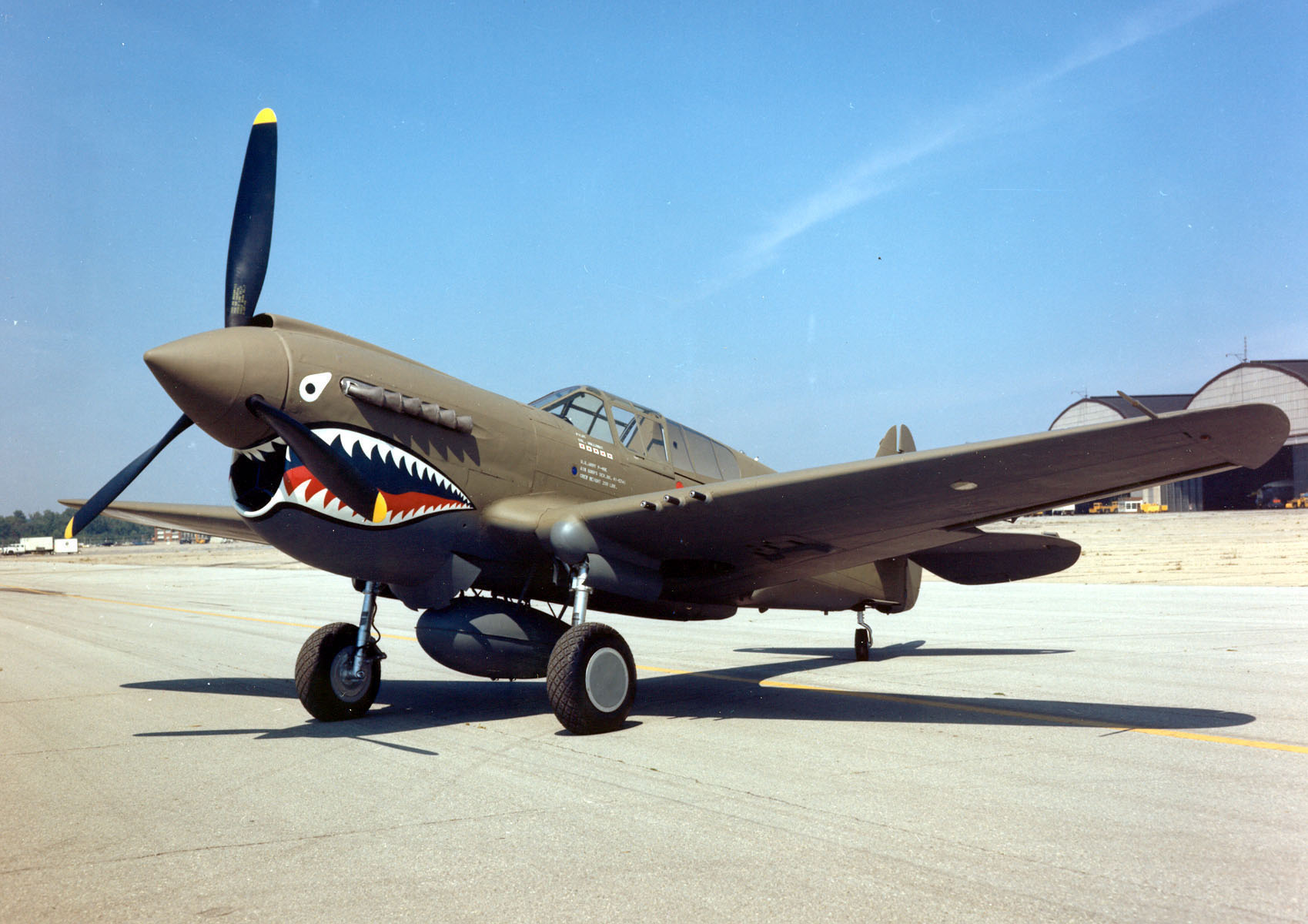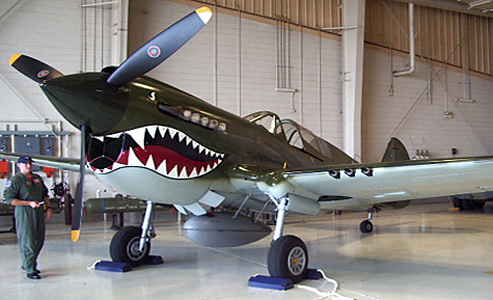P-40 Warhawk was a military airplane used by the United States and its allies during World War II (1939-1945). The P-40 was a single-engine fighter (fast-flying plane with weapons) designed by the Curtiss-Wright Corporation. At that time, P was the U.S. Army’s designation for a pursuit (fighter) plane. The P-40 was one of the most famous fighters of World War II.
Most P-40 Warhawks carried one pilot and six heavy machine guns. Some also carried bombs for surface attacks. An engine made by the Allison Engine Company gave the plane a top speed of about 370 miles (595 kilometers) per hour. The P-40’s maximum altitude was around 30,000 feet (9,144 meters). Its range with a _drop tank—_an exterior fuel tank attached beneath the plane’s body—was about 850 miles (1,368 kilometers). The Warhawk was slower and less maneuverable than many planes of its era. However, pilots praised the plane’s firepower, reliability, and ruggedness.
Curtiss-Wright tested P-40 prototypes in 1938. The fighters began service in the U.S. Army Air Corps in 1940. They entered combat with the United Kingdom’s Royal Air Force in 1941. After the United States entered World War II in December 1941, P-40’s were the only U.S. Army fighters available in large numbers.
Warhawks fought on every front during World War II. They played key roles in early battles against the Japanese. The planes excelled in both air combat and ground attacks. They also escorted bombers (airplanes used to drop explosives) to and from targets.


The American Volunteer Group, better known as the Flying Tigers , flew P-40’s in China and Southeast Asia. The Tuskegee Airmen —the African American 99th Pursuit Squadron and, later, the 332nd Fighter Group—flew P-40’s over Italy before switching to P-47 Thunderbolts and P-51 Mustangs . Warhawks also flew in British Commonwealth, Chinese, Soviet, and other Allied air forces. Many P-40’s in foreign air forces were called Tomahawks or Kittyhawks.
Throughout the war, P-40 Warhawks destroyed thousands of enemy aircraft, locomotives, ships, and other targets. The P-40 remained in production late into 1944. Nearly 14,000 of them were built. The United States and most other nations retired the Warhawk from front-line service in 1945. Reserve forces and some foreign air forces continued to fly the plane for a number of years.
